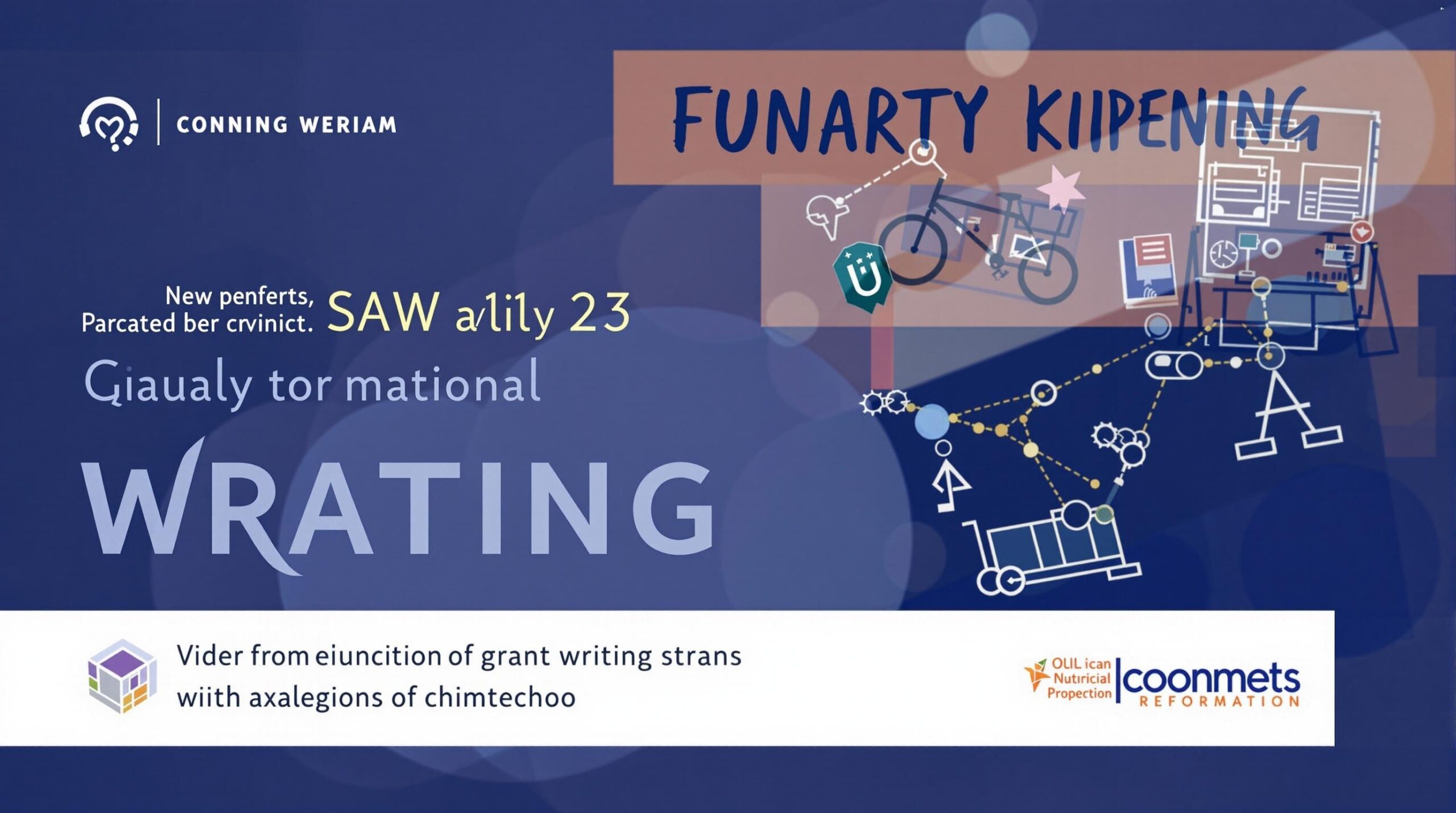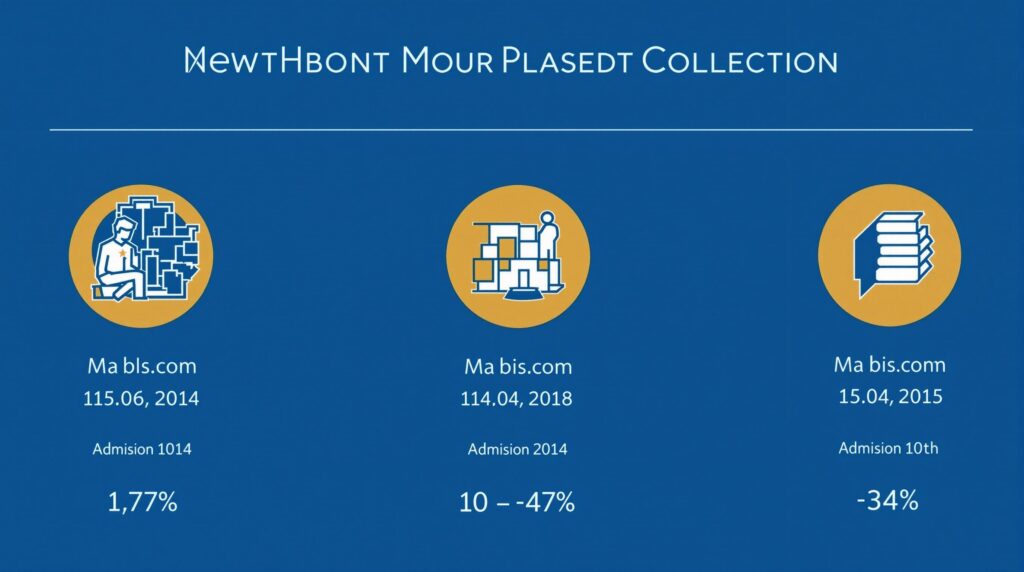Securing educational grants in 2025 requires a strategic approach that combines clear writing, data-driven proposals, and alignment with current funding priorities. The grant landscape continues to evolve with significant increases in federal funding and new programs focused on academic recovery, creating opportunities for educators who can effectively communicate their vision.
Key Takeaways
- Federal funding has increased to $18.6 billion for Title I with a new $8 billion program focusing on academic recovery
- Successful proposals use eighth-grade reading level clarity and active voice to communicate complex ideas
- Cross-sector partnerships increase funding success by 34% according to recent studies
- Detailed budget breakdowns with technology allocations of 15-20% demonstrate financial transparency
- Avoiding common pitfalls like jargon overload and vague goals can dramatically improve approval chances
Understanding the 2025 Educational Grant Landscape
The 2025 educational funding environment presents significant new opportunities for educators and researchers. Federal priorities have shifted notably with the Title I program receiving $18.6 billion—a $200 million increase from 2024. Additionally, the introduction of the Academic Acceleration and Achievement Grants program demonstrates the government’s commitment to evidence-based interventions focusing on tutoring, attendance initiatives, and summer learning.
At the state level, literacy remains a key focus with the $194 million Comprehensive Literacy State Development (CLSD) Grant being distributed across 22 states and Washington, D.C. These funds target evidence-based literacy interventions, particularly for programs addressing COVID-19 recovery gaps among English learners and students with disabilities.
For early-career academics, the William T. Grant Scholars Program offers valuable five-year research grants specifically designed for researchers exploring new disciplines. The program emphasizes mentorship and policy relevance, making it an excellent opportunity for those looking to establish themselves in educational research while securing federal financial assistance for their work.

Crafting Compelling Grant Narratives
When writing grant proposals, clarity is paramount. Aim for an eighth-grade reading level (scoring 60-70 on WebFX’s Readability Test) to ensure your ideas are accessible to diverse review panels. Using active voice consistently throughout your proposal demonstrates confidence and ownership—replace passive constructions like “The program will be implemented” with “Our team will implement the program.”
Effective grant writing tips include integrating specific data points with personal anecdotes. For example, instead of simply stating that tutoring helps students, specify that “After-school tutoring improved math scores by 18% in pilot schools.” This combination of quantitative and qualitative evidence creates a compelling case for your program.
Avoid educational jargon and vague timelines that can confuse reviewers. Instead, specify concrete actions and deadlines such as “The literacy team will train 30 teachers in phonics instruction by Q3 2025.” Structure your proposal around a central narrative that showcases both individual impact and district-wide potential.
Building Effective Collaborations and Integrating DEI Principles
Cross-sector partnerships between schools and local nonprofits increase funding success by 34% according to Brady Martz grant writing research. These collaborative approaches demonstrate sustainability and community buy-in that funders value. When developing partnerships, focus on organizations that complement your educational goals rather than duplicating services.
Diversity, Equity, and Inclusion (DEI) principles should be integrated throughout your proposal. Highlight inclusive program designs such as bilingual tutoring options and culturally responsive curricula. Showcase mentorship components similar to those emphasized in NIH’s Research Career Development (K) Awards.
The most competitive proposals emphasize collective impact models that coordinate efforts across communities. Include diverse stakeholders in both planning and implementation phases to demonstrate genuine commitment to inclusive practices rather than surface-level acknowledgments.
Budget Planning and Financial Transparency
Detailed financial reporting is essential for building trust with funders. For example, a $250,000 tutoring grant proposal might include this breakdown:
- Personnel: $150,000 (60%)
- Technology: $40,000 (16%)
- Materials: $35,000 (14%)
- Evaluation: $25,000 (10%)
Current grant writing trends show that allocating 15-20% of budgets to technology components reflects an understanding of modern educational needs. Link each budget item directly to program objectives and expected outcomes, explaining how each expenditure advances your goals.
Include sustainability plans that outline how successful programs will continue after grant funding ends. This might involve phased transitions to district funding, community partnerships, or scaled implementation models. Demonstrate cost-effectiveness through comparative data and ROI projections that show the value of your approach compared to alternatives.
Technology Integration and Data Management
Modern grant proposals require sophisticated approaches to technology and data. Utilize specialized software such as Salesforce Nonprofit Cloud for impact tracking, Microsoft Power BI for data visualization, and PandaDoc for streamlined proposal management. Budget appropriately for technology needs, such as $15,000 for student progress dashboards.
Detail your data collection and analysis methodologies for measuring outcomes. Explain specifically how technology will enhance program delivery and evaluation beyond what traditional methods offer. Demonstrate familiarity with current educational technology trends and their evidence base to show that your approach is both innovative and practical.
When discussing technology, focus on its role in addressing educational challenges rather than the technology itself. For example, instead of simply requesting funds for tablets, explain how these devices will facilitate personalized learning pathways that adapt to individual student needs and provide real-time feedback to teachers.
Avoiding Common Pitfalls in Educational Grant Applications
The most frequent reasons for rejection include jargon overload—68% of rejected proposals misuse terms like “scalable” without proper context. Replace vague timelines with specific milestone dates (e.g., “Teacher training by Month 4”) to demonstrate realistic planning.
Set specific, measurable goals instead of general aspirations. For instance, instead of stating you will “improve literacy,” commit to “Increase third-grade reading proficiency by 15% by June 2026.” Include explicit evaluation plans with pre/post-intervention assessments that align with your stated objectives.
Address potential implementation challenges and contingency plans proactively. Reviewers appreciate candid discussions of possible obstacles and your strategies for overcoming them. This demonstrates thorough planning and realistic expectations about program implementation.
Professional Development for Grant Success
Investing in your grant writing skills significantly improves success rates. Seek specialized training through the Brady Martz Grant Writing Certification and University of Michigan’s NIH K Award courses. These programs provide sector-specific techniques that address the unique requirements of educational funding.
Attend the 2025 National Grant Professionals Association Conference to network with funders and fellow grant writers. These connections often provide insider perspectives on upcoming priorities and navigating Grants.gov workspace more effectively.
Early-career researchers should pursue mentored grants that pair them with senior advisors. Implement peer review processes within your institution—these collaborative approaches can improve proposal success rates by 22% according to University of Southern Indiana research. Develop relationships with program officers at funding agencies to receive feedback on proposal drafts before submission.
Finding the Right Grant Opportunities
The major federal programs to target include Academic Acceleration and Achievement Grants, Title I, and CLSD. However, don’t overlook local funding sources such as Special Olympics Unified Champion Schools (offering up to $2,000 per classroom) and utility co-ops that often sponsor educational initiatives.
State education departments frequently offer specialized grants like Illinois’ $5 million STEM Equity Grant. For smaller projects, crowdfunding platforms like DonorsChoose remain effective, with 78% of teachers securing funds under $1,500 for classroom needs.
Subscribe to state education newsletters and grant databases for regional opportunities that may have less competition than national programs. Consider exploring national foundations offering educational grants that align with your specific focus area, as these can provide substantial funding with more flexibility than government sources.
By applying these grant writing tips systematically and staying current with funding priorities, educators and researchers can significantly improve their chances of securing educational grants in 2025. The key is combining technical expertise with clear communication that connects your vision to measurable outcomes and current funding priorities.
Sources
DH Leonard Consulting | Grant Writing Tips for Nonprofits
Edmentum | State Education Grants to Monitor and Access in 2025
William T. Grant Foundation | William T. Grant Scholars Program
Brady Martz | Effective Grant Writing in 2025: Key Strategies for Securing Funding
U.S. Department of Education | Fiscal Year 2025 Budget Summary
University of Michigan | Grant Writing Strategies for NIH Research Career Development K Awards



